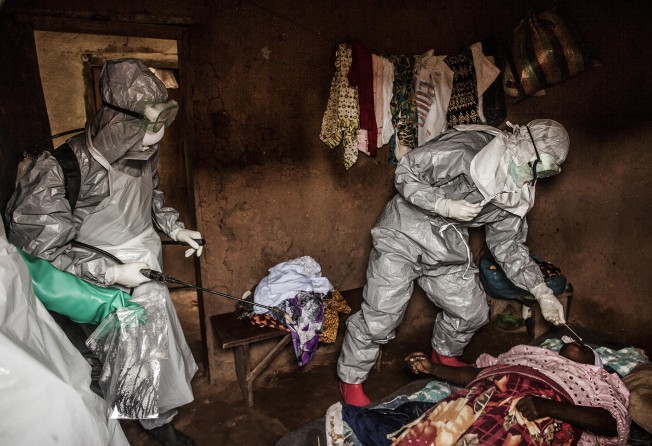Scientists make genetic map of Ebola disease strain raging through Africa
International team of researchers have completed genome sequence of the disease strain now raging in Africa, a key step in finding a vaccine

It's on a killing spree, and now it has a new - and remarkably complete - genetic mug shot.
An international team of scientists has sequenced the RNA of 99 Ebola virus samples collected during the early weeks of the outbreak in Sierra Leone. The feat, described on Thursday in the journal Science, gives researchers a powerful new tool in their effort to contain the deadly virus.
"The genome sequence of a virus is the blueprint on which that virus is built," said Pardis Sabeti, the Harvard geneticist who helped oversee the study. "Diagnostics are built on knowing that sequence; vaccines are also built using genome sequences. And if you want to build those as best you can, you want to know what the virus looks like today."
Scientists are already scouring that sequence for clues to help them design effective drugs and vaccines. It could take years to find them all, Sabeti said.
For now, evidence embedded in the RNA reveals that the Ebola virus responsible for killing at least 1,552 people so far originated with a single transmission from an animal to a human in Guinea. It also shows that this lineage, which first emerged in humans in 2013, diverged from other variants of Ebola in 2004.
Sabeti and her team began sequencing Ebola samples in June, just days after the virus was detected in Sierra Leone on May 25. The results have been available to scientists on the National Centre for Biotechnology Information's website since mid-June, almost as soon as the sequencing machines spat them out.
"We want to enable everyone in the scientific community to look at the genetic sequences at once and crowd-source a solution," she said.
The urgency for better treatments is real for Sabeti and her colleagues. Five of the study co-authors in Sierra Leone have died of Ebola since contributing to the research.
They were Dr Sheik Umar Khan, who had 10 years' experience treating patients who contracted deadly viruses; Mbalu Fonnie, a senior matron of nursing and a midwife; lab technician Mohamed Fullah; and nurses Alex Moigboi and Alice Kovoma.
"It has been an emotional time for us," said study co-leader Stephen Gire, a research scientist at Harvard who studies the evolution of viruses. "It makes us want to work harder to get this information out there."
The 99 sequences described in the study were collected from 78 patients seen at Kenema Government Hospital during the first three weeks of the outbreak.
Hours after the first Ebola case was detected in the Sierra Leone hospital, a member of Sabeti's team at Harvard got on a plane to help hospital workers prepare samples of the virus to send back to Boston for analysis.
Members of Sabeti's team donned face shields, disposable gowns and two layers of gloves as they assembled the sequencing libraries around the clock. As a result, the team was able to get the first samples up on the internet just 12 days after it received them.
The achievement was "nothing short of breathtaking", said Dr Anthony Fauci, director of the National Institute of Allergy and Infectious Diseases.
"To get a whole genome sequence could take four or five months," added Charles Chiu, who studies viral metagenomics at the University of California, San Francisco "This is the largest sequence of Ebola viruses ever done, and they did it in less than a month."